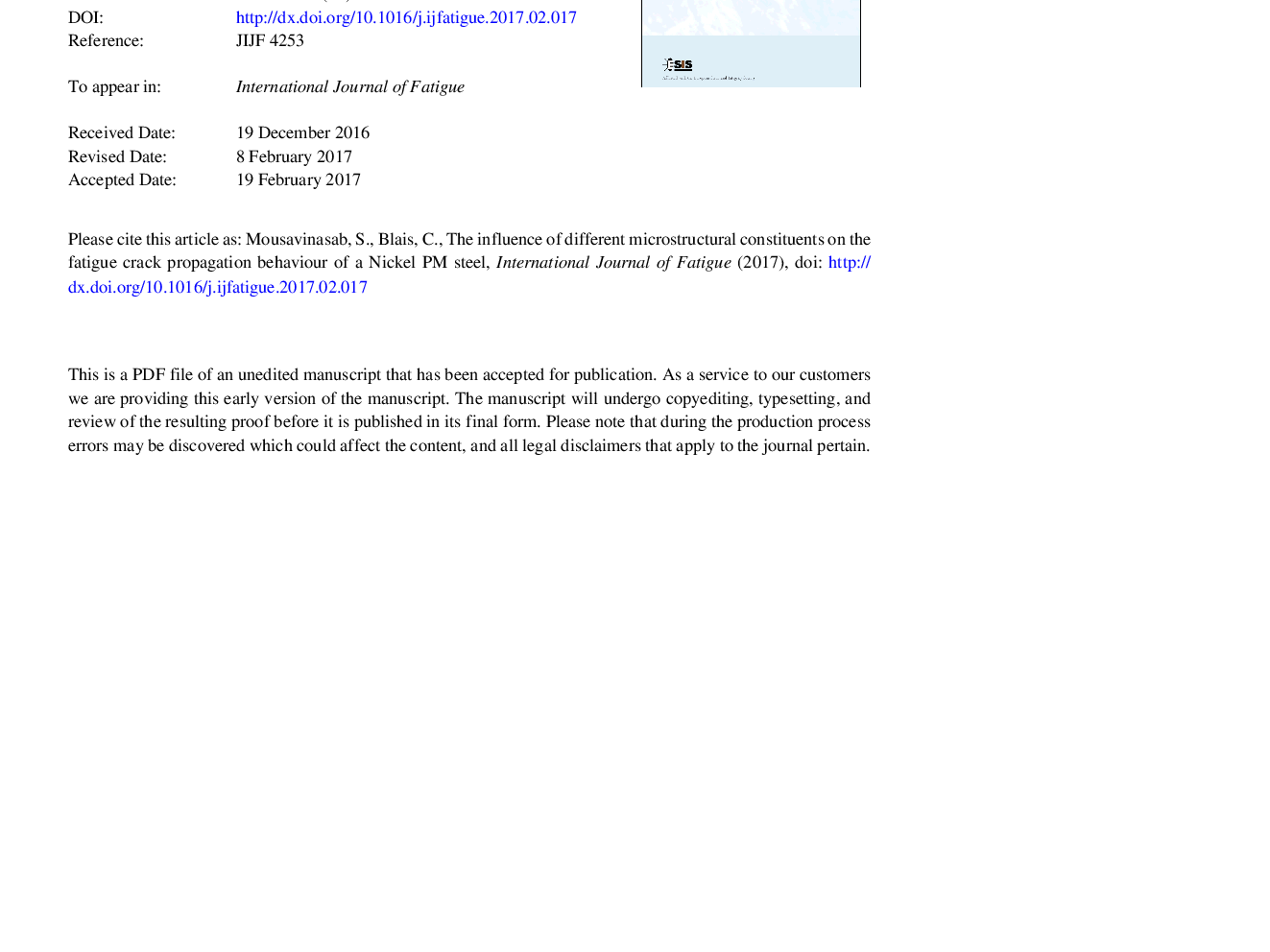| Article ID | Journal | Published Year | Pages | File Type |
|---|---|---|---|---|
| 5015275 | International Journal of Fatigue | 2017 | 29 Pages |
Abstract
A popular Ni admixed PM steel (FN0208) was chosen as study material since it is recognized to yield heterogeneous microstructures upon sintering. Moreover, two types of heat treatments were carried out to vary the volume fractions of microstructural constituents. Fatigue crack growth rates were measured for all heat-treated conditions using two R-ratios. A quantitative analysis was performed to characterize the spatial distribution of microstructural constituents on the fracture surfaces. Results show that, and contrary to what has been reported in literature, areas made of retained austenite or Ni-rich ferrite cause significant crack deflection, i.e. more tortuous crack path, but this behaviour does not translate into a reduction of the rate of fatigue crack propagation. Thus, the hardest phase, tempered martensite or bainite, are the ones that yield the lowest fatigue crack propagation rates albeit with a flatter, straighter crack path.
Related Topics
Physical Sciences and Engineering
Engineering
Mechanical Engineering
Authors
Saba Mousavinasab, Carl Blais,
